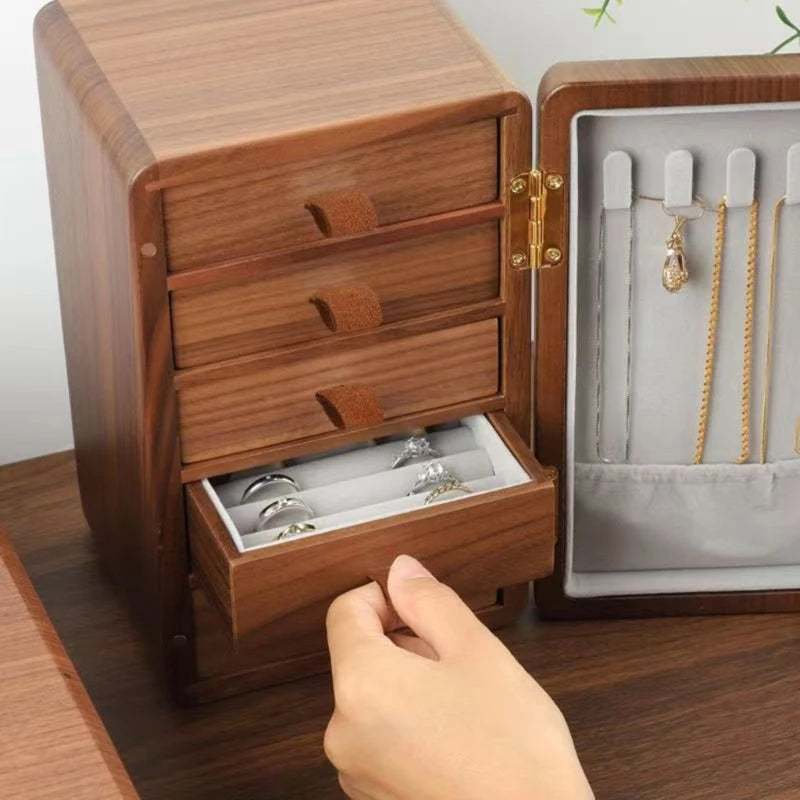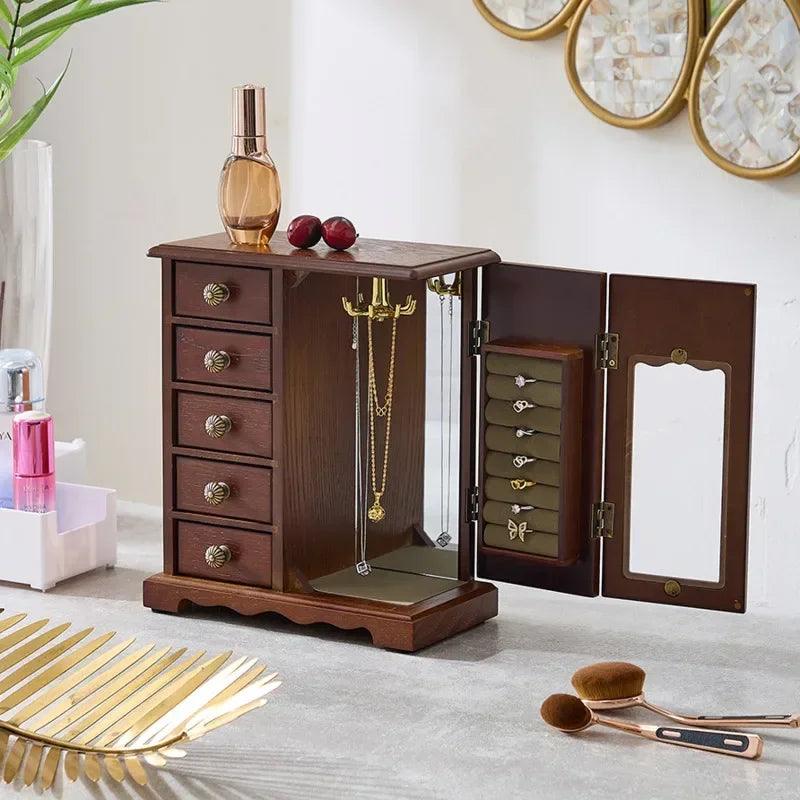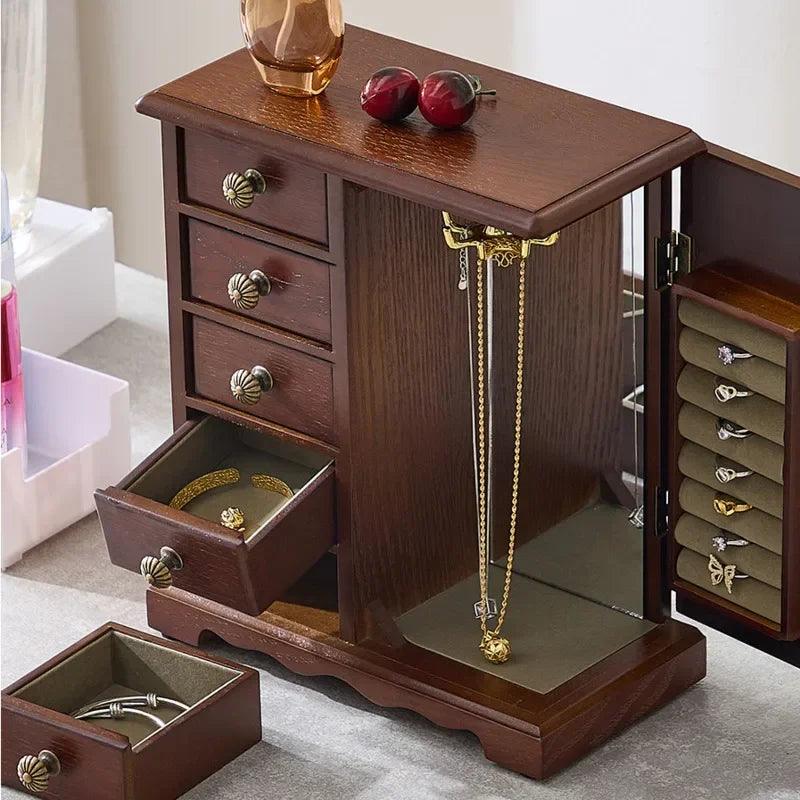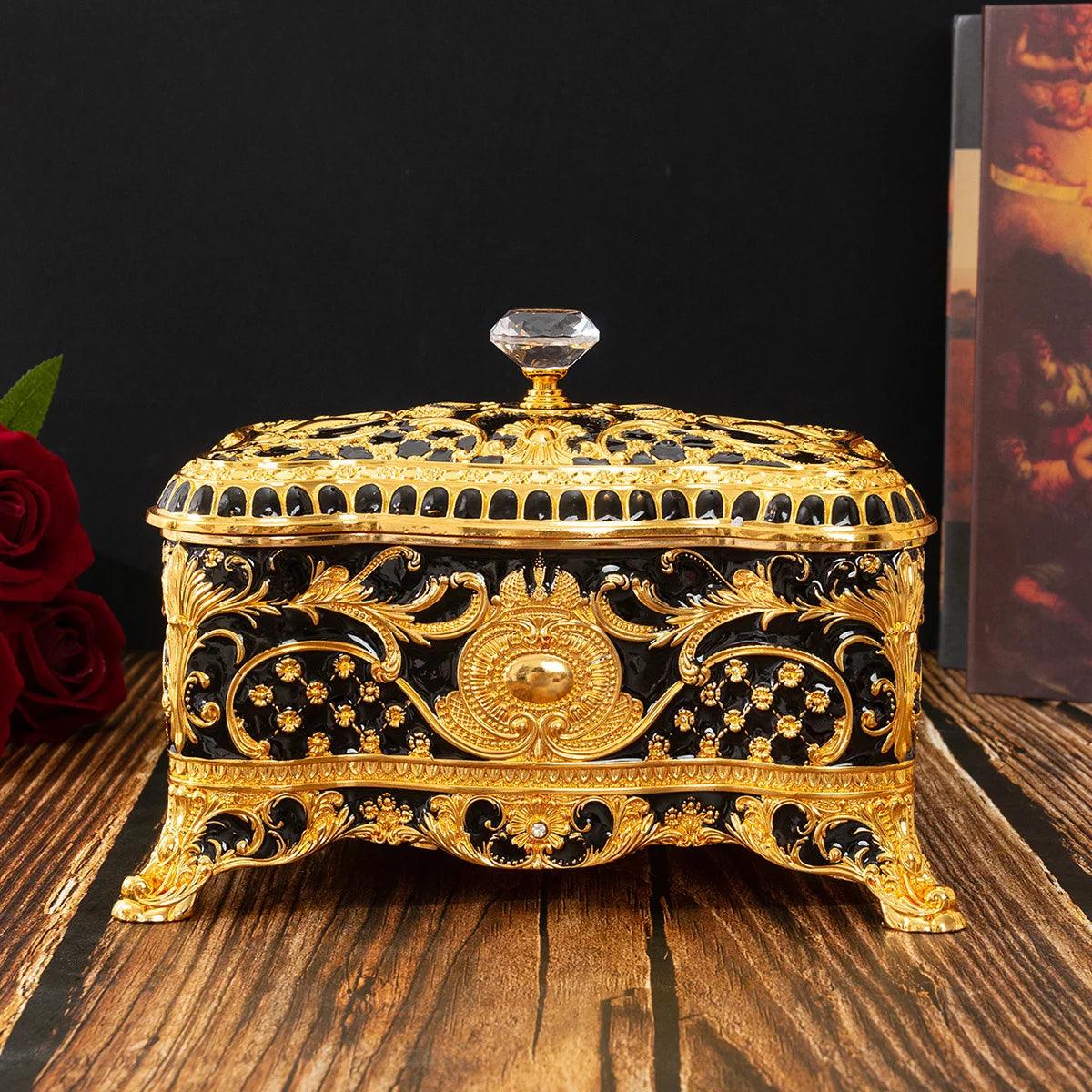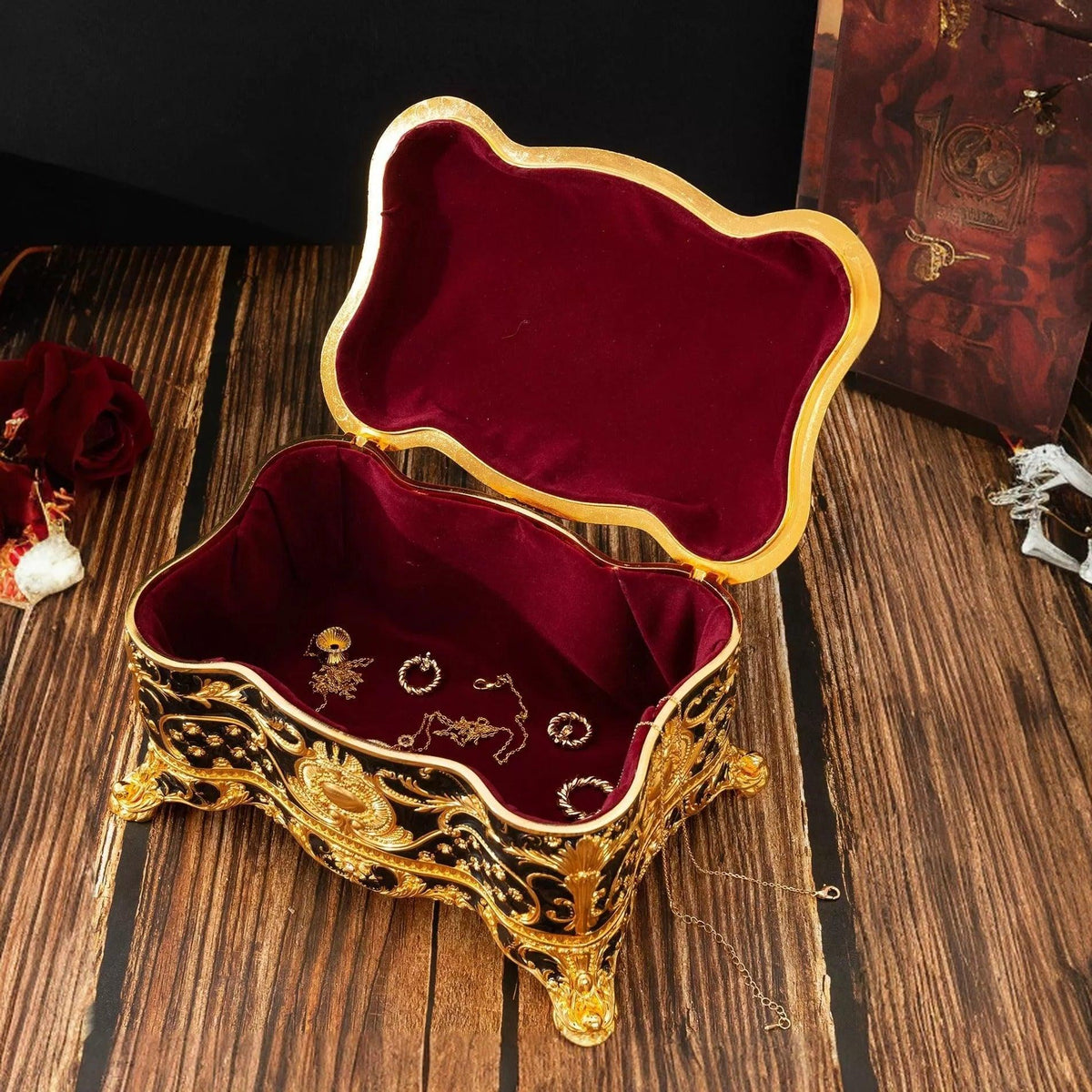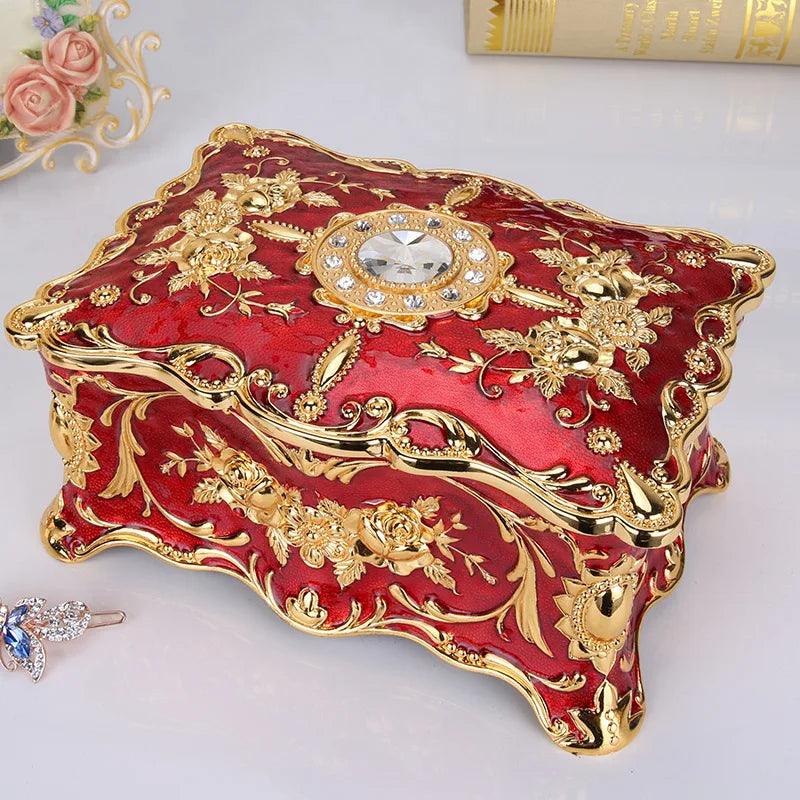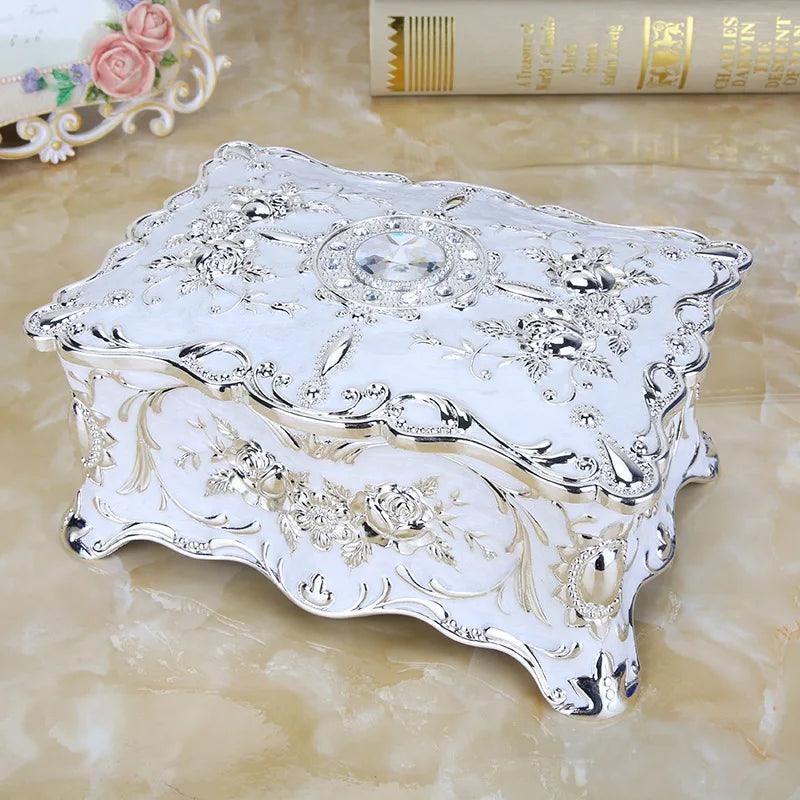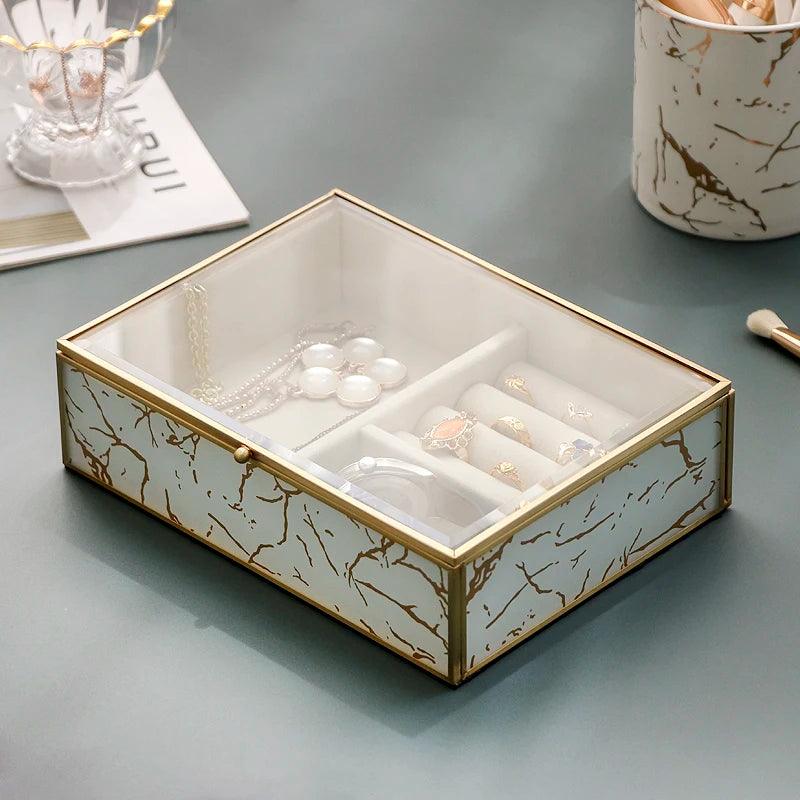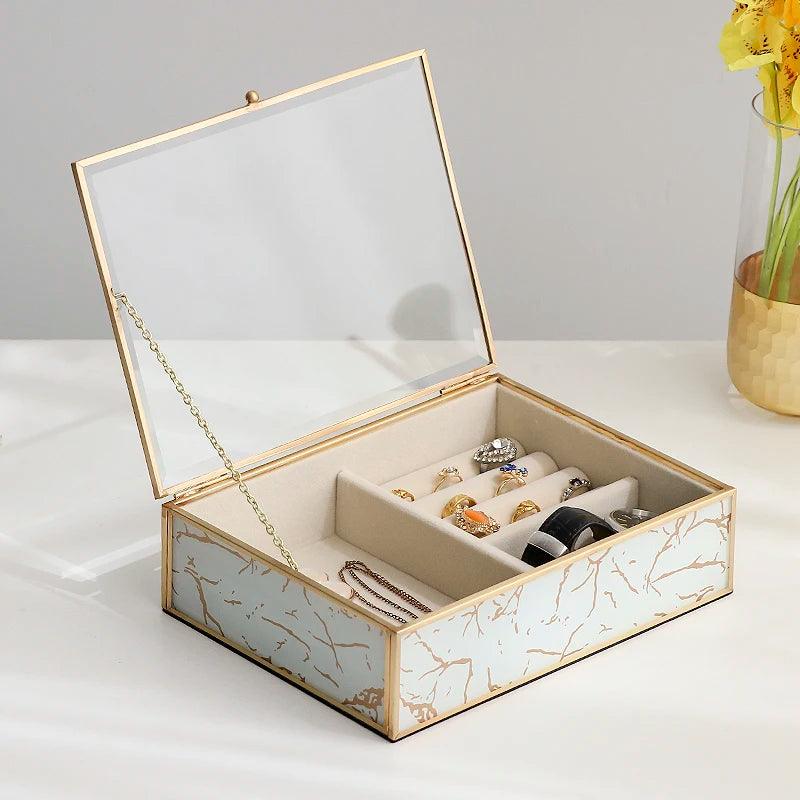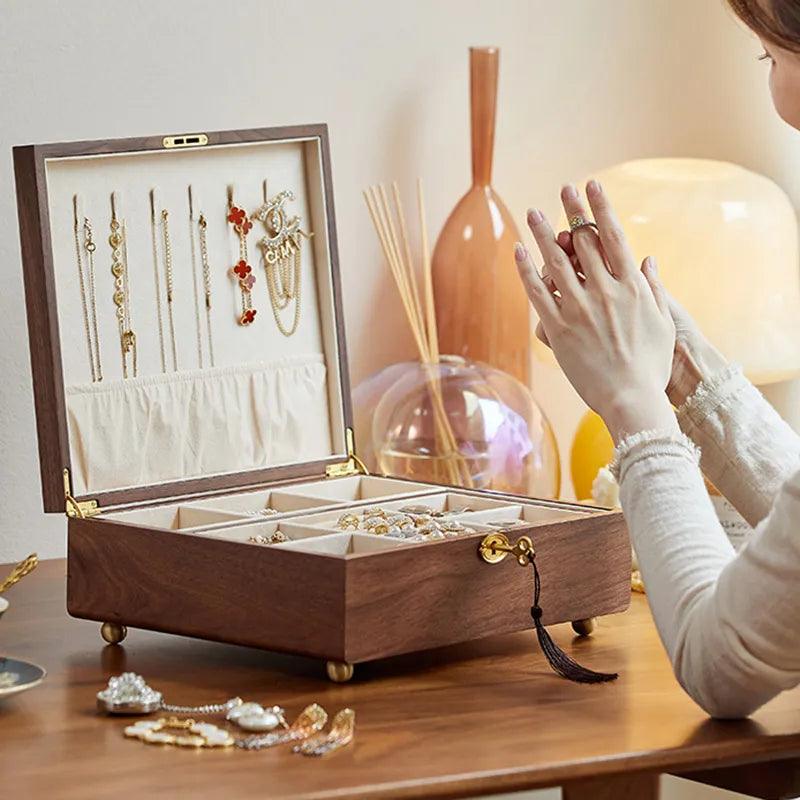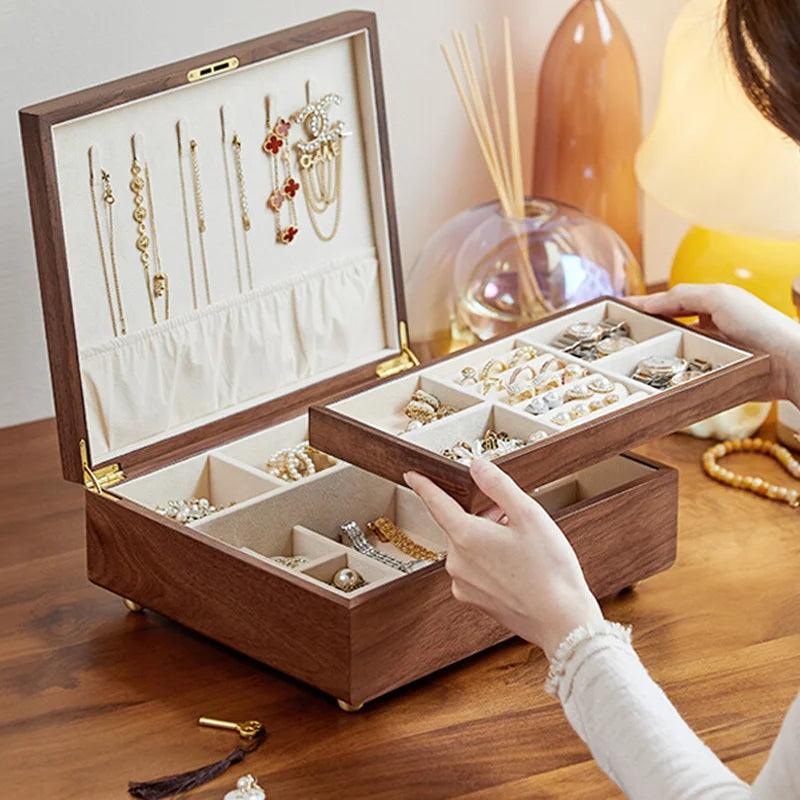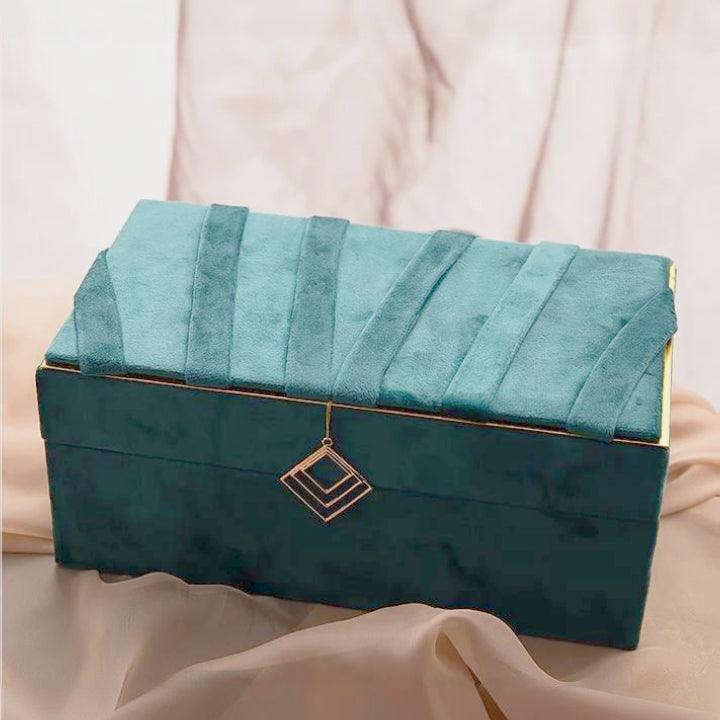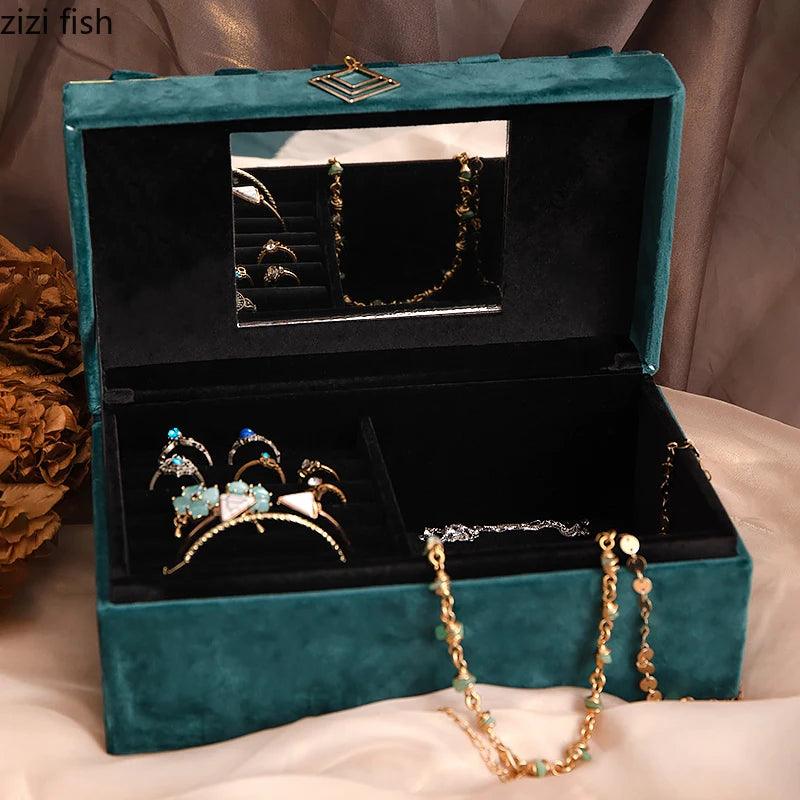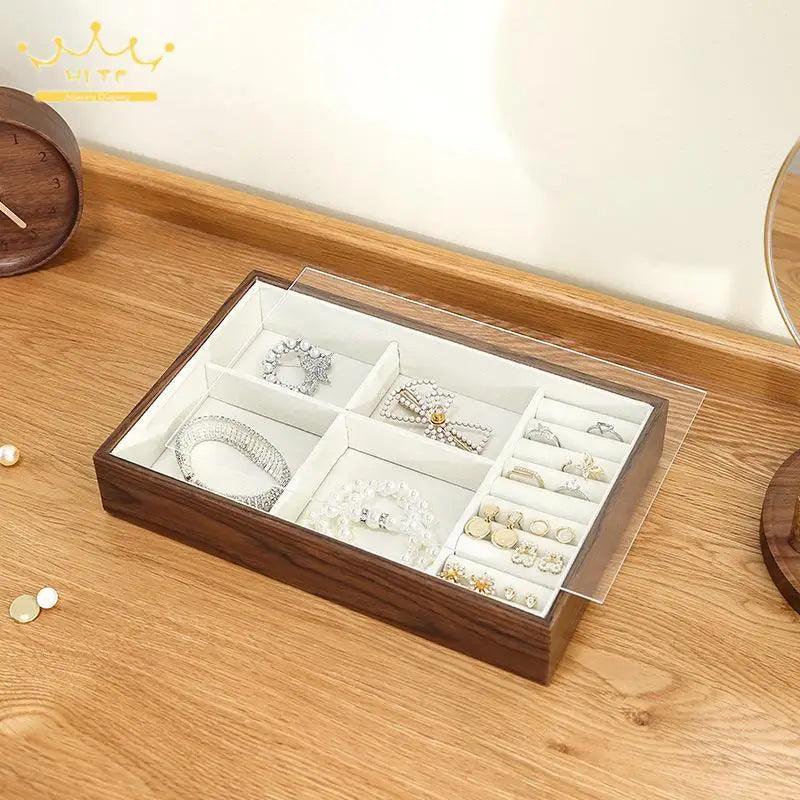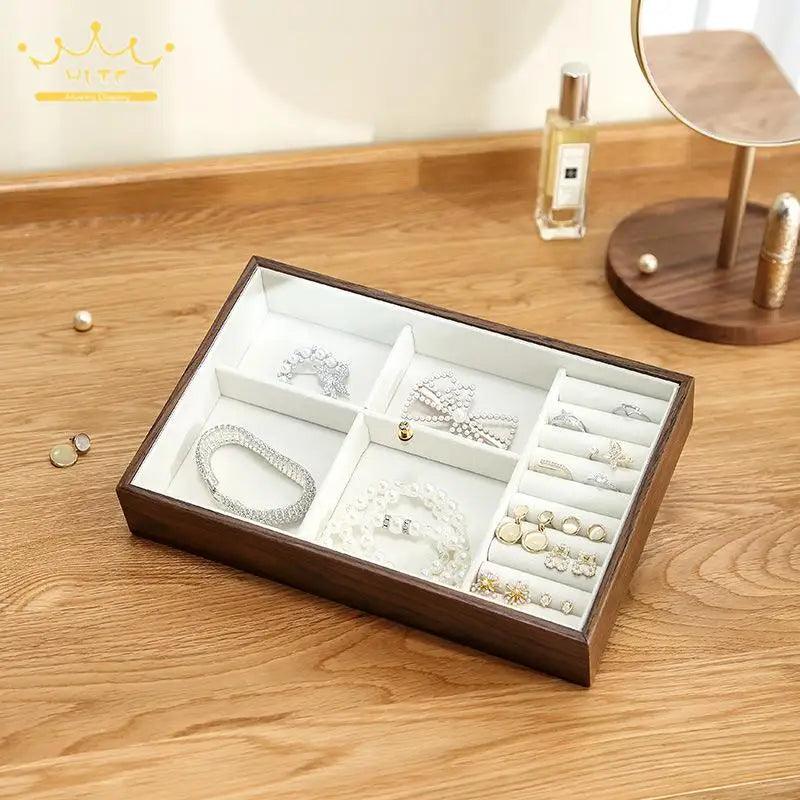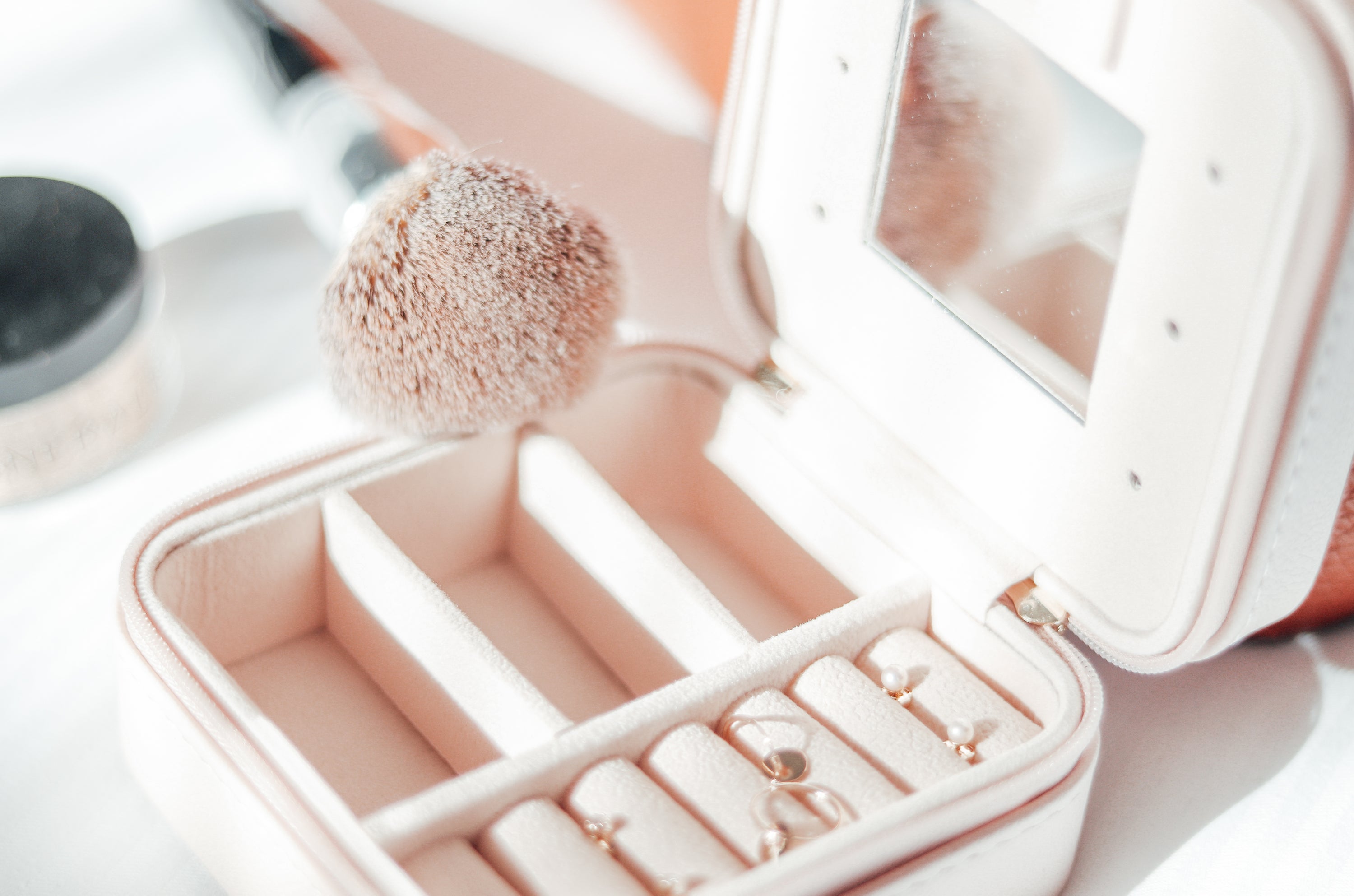Exploring the World of Vintage Jewelry Boxes
Vintage jewelry boxes captivate collectors and casual enthusiasts alike with their timeless beauty, historical value, and intricate craftsmanship. They're often handmade and vary in style, shape, and material, reflecting the trends and artistry of different historical periods and regions. For many, these boxes are a reminder of a bygone era, serving as treasured keepsakes that once stored precious jewelry. Let's delve into the evolution, types, and significance of vintage jewelry boxes while providing insights into their care and acquisition.
Historical Evolution of Jewelry Boxes
Origins and Ancient Designs: Jewelry boxes can trace their roots back to ancient civilizations. In Egypt, jewelry boxes were used as ornate chests for storing gold, glass, and trinkets. Made from carved wood, stone, and precious metals, these boxes were often decorated with hieroglyphics and images of gods to symbolize protection and spirituality. Similarly, the Romans created chests from bronze and wood, showcasing elaborate motifs that highlighted the wearer's status. These ancient designs laid the groundwork for future developments.
Medieval and Renaissance Eras: During the medieval and Renaissance eras, jewelry boxes became luxury items reserved primarily for nobility and wealthy merchants. Crafted from precious metals and wood, they often featured intricate carvings, engraved metalwork, and ornate paintings that made them exquisite treasures in their own right. In Renaissance Italy, artisans decorated boxes with inlaid mother-of-pearl or copper, while French artisans created chests painted with pastoral scenes or biblical motifs.
19th and Early 20th Century Styles:
-
Victorian Era: The Victorian period, marked by Queen Victoria's reign (1837-1901), saw jewelry boxes become more widely available, partly due to mass production during the Industrial Revolution. Boxes of this era were typically made from brass, rosewood, or mahogany, and often featured elaborate carvings and engravings. Their interiors were usually lined with luxurious materials like velvet or silk. Miniature travel cases became popular, too, catering to the demands of the increasingly mobile upper and middle classes.
-
Art Nouveau: From the late 19th century into the early 20th century, the Art Nouveau movement brought an appreciation for natural motifs, resulting in flowing designs inspired by flora and fauna. Hand-painted or inlaid with enamel and gems, these jewelry boxes encapsulated the organic and asymmetrical forms characteristic of this style.
-
Art Deco: Art Deco jewelry boxes showcased bold geometric patterns, with luxury materials like gold, silver, ivory, and glass creating a sophisticated look. They often featured lacquered finishes and mirrored trays to align with the opulence and modern aesthetic of the time.
Post-War to Modern Era: After World War II, jewelry boxes became more practical and emphasized simplicity, incorporating modern materials like plastic. During the mid-20th century, minimalist designs with clean lines reflected the rising popularity of Scandinavian and Danish modern styles. These jewelry boxes focused on utility, incorporating removable trays and practical compartments.
Global Influences: Jewelry boxes across regions demonstrate diverse cultural craftsmanship:
-
Asian: Chinese lacquerware boxes and Japanese inlaid wood exemplify the meticulous artistry of these regions, often incorporating mother-of-pearl, precious metals, and traditional lacquer techniques.
-
Middle Eastern: Moroccan jewelry boxes typically feature intricate carvings and mother-of-pearl inlays, while Middle Eastern wooden jewelry boxes often include vibrant embroidery.
-
European: European styles showcase Rococo, Victorian, Art Nouveau, and Regency influences, reflecting the grandeur and artistic evolution of these periods.
Types and Styles of Vintage Jewelry Boxes
Material-Based Types:
-
Wooden: Crafted from rosewood, walnut, burl, or cedar, these jewelry boxes offer a warm, traditional feel. Some are intricately carved, while others feature simple, smooth finishes.
-
Metal: Boxes made from brass, bronze, copper, and silver are durable and often feature intricate engravings and embossing.
-
Fabric-Covered: Covered in leather, silk, or velvet, these boxes evoke a sense of luxury while protecting their precious contents.
Regional Styles:
-
European: Rococo, Victorian, Art Nouveau, and Regency styles represent distinct design periods, often featuring ornate decorations, miniature chests with drawers, and elaborately carved wood or metalwork.
-
Asian: Asian jewelry boxes typically showcase mother-of-pearl inlay or lacquerwork.
-
Middle Eastern: Middle Eastern boxes often feature detailed embroidery or painted geometric patterns.
Specialty Boxes:
-
Puzzle Boxes: These often wooden boxes feature unique locking mechanisms that require solving puzzles to open.
-
Travel Cases: Small, compact, and durable, these cases are perfect for storing jewelry and trinkets while on the move.
-
Lined Boxes: Lined with silk or velvet, these boxes ensure jewelry is well-protected.
Significance and Symbolism
Historical and Cultural Value: Jewelry boxes reflect the craftsmanship and cultural values of their time. They provide valuable insights into the trends and practices of various historical periods. Artifacts like Chinese lacquer boxes, European brass chests, or Moroccan hand-carved wooden boxes each tell a unique story about the societies that produced them.
Sentimental Value: For many families, jewelry boxes become heirlooms passed down through generations. They contain sentimental value that surpasses their material worth, linking them to cherished memories and personal stories.
Collector’s Value: Authentic, beautifully crafted boxes with unique designs, intricate details, and a well-documented provenance are highly sought after by collectors. Factors like condition, rarity, and origin significantly impact the value of these boxes in the collector's market.
Caring for Vintage Jewelry Boxes
Cleaning and Restoration:
-
Wooden Boxes: Use a soft cloth to gently clean dust and debris. Wood polish can revive dulled finishes. Avoid harsh chemicals, as they can damage delicate finishes and paint.
-
Metal Boxes: Brass, bronze, and silver boxes should be polished using non-abrasive cleaners or special polishing cloths. Test in a small area first to ensure the cleaner won't damage the surface.
Storage and Preservation:
- Environmental Conditions: Store in a cool, dry place to prevent moisture damage.
- Padding: Keep boxes well-padded and away from direct sunlight to prevent fading.
Common Issues:
- Wood Cracking: Moisture imbalance can cause cracking. Store boxes in an environment with stable humidity.
- Tarnish: Polish silver and brass periodically to prevent tarnish buildup.
- Faded Linings: Replace worn linings with new velvet or silk.
Finding and Acquiring Vintage Jewelry Boxes
Sources:
-
Antique Shops: Physical stores often have unique pieces that you can inspect firsthand.
-
Estate Sales and Auctions: Great places to find rare and valuable boxes.
-
Online Marketplaces: Websites like eBay and Etsy offer a wide selection but require careful scrutiny.
Evaluating Authenticity:
- Marks and Labels: Look for makers' marks or labels to identify the origin.
- Period-Appropriate: Ensure the design, materials, and techniques align with the purported period.
- Craftsmanship: Check for well-executed joints, intricate carvings, or other signs of quality.
Budgeting and Negotiation:
- Price: Research similar items to set a realistic budget that aligns with rarity and condition.
- Negotiation Tips: When negotiating, be respectful but firm about your budget.
Conclusion
Vintage jewelry boxes embody the craftsmanship, art, and history of their time. Whether intricately carved from wood, ornately painted, or cast in brass or silver, these boxes tell stories that transcend generations. Proper care ensures these beautiful treasures continue to inspire and delight collectors. Finding and acquiring them remains a thrilling treasure hunt for unique and meaningful designs.
By understanding their history, types, and significance, you can better appreciate their role in the past and preserve their legacy for future generations.
If you're fascinated by history, you should explore our collection of antique jewelry boxes. These antique boxes predate vintage ones, often featuring rare and exquisite materials with centuries-old craftsmanship. Antique jewelry boxes provide a window into the unique tastes and cultures of past centuries. Whether used to store precious heirlooms or displayed as works of art, these timeless treasures are a testament to the artistry of bygone eras.

